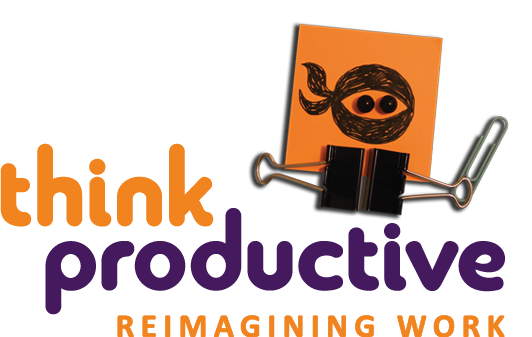We talk a lot at Think Productive UK about avoiding meetings, and ways to achieve the goal in a different way.
However, we mustn’t overlook the times when only a meeting will do.

READ THE ROOM
Image – License![]() Some rights reserved by Sam Bald
Some rights reserved by Sam Bald
The unique facet of a meeting above almost all of the alternatives I’ve listed is that you have all the people that matter in a room together, and you can eyeball them.
This means that you can really get a sense of the nuances, politics and potential commitment of all the key players. You can ask the difficult questions and get back not just answers but promises. What usually goes wrong in meetings is that people use them for getting promises on the detail rather than promises on the higher-level questions, questions such as:
? “What’s the general approach?”
? “If it’s this vs. this, what wins?”
? “Who are we most out to satisfy here?”
? “What’s more important here, quality or cost, and where is the line before that answer changes?”
These are the sky-level questions, built on strategic thinking and the knowledge of the bigger picture. Using meetings to establish and revisit these kinds of questions is key. Let the promises and guidance from sky-level, strategic issues steer the direction of operational decisions without the need for another meeting.
So many meetings focus on the ground-level details, when detail is much better delegated to one individual than discussed in committees. Done well, these kinds of meetings should be intense rollercoasters of emotion, conflict, compromise and heated argument, led by skilful questioning and listening.
MEET WHEN THE EMOTIONAL FALLOUT IS IMPORTANT TO MANAGE
Image License![]() Some rights reserved by libertygrace0
Some rights reserved by libertygrace0
 Similarly, if you’re conveying difficult decisions, or need to explore a difficult topic that might prove personal and emotional for some of the people involved, you probably need a meeting. I still think you can do more preparation here to limit the time spent and make raising the super-difficult issues a little more palatable.
Similarly, if you’re conveying difficult decisions, or need to explore a difficult topic that might prove personal and emotional for some of the people involved, you probably need a meeting. I still think you can do more preparation here to limit the time spent and make raising the super-difficult issues a little more palatable.
There’s definitely no honour in hiding behind an email when communicating the kinds of decisions where someone really deserves the right to look you in the eye. One word of caution here though: only manage emotional fallout if it’s important for you to do so. So if John has worked for the company for 27 years and you’re having to make his role redundant, that’s important. If Bill is going to throw a hissy fit because you’ve chosen a different design to his preferred choice, well perhaps that’s something you don’t need to see so let him have that hissy fit somewhere else – most probably at home with his partner.
MEET TO ESTABLISH MOMENTUM, FLOW AND ENERGY
Start projects with ‘kick-off meetings’. The aim here is to gel a team together and go through Tuckman’s classic stages of group development, from ‘forming, to storming, to norming’, so that for the rest of the project, they’re in the next stage: ‘performing’.
Establishing a good energy, flow and momentum is great because it makes future collaborations easier and smoother. Since the purpose of these meetings is about personal chemistry and light-touch interaction with the issues, it’s often a good idea to hold these kinds of meetings in unorthodox settings.
So be brave, and take them tenpin bowling or for a nice meal outside the office.
These are also great occasions for symbolism and storytelling. You may want to invite along someone senior who will have little to do with the day-to-day running of the project but who can stress to the newly assembled team just how important this project is and the bigger picture into which it fits. An hour or two invested at this stage pays back tenfold in increased commitment, enhanced and more intelligent communications and solid, productive momentum.
Find out more about improving your meetings, with our in-house facilitation training

